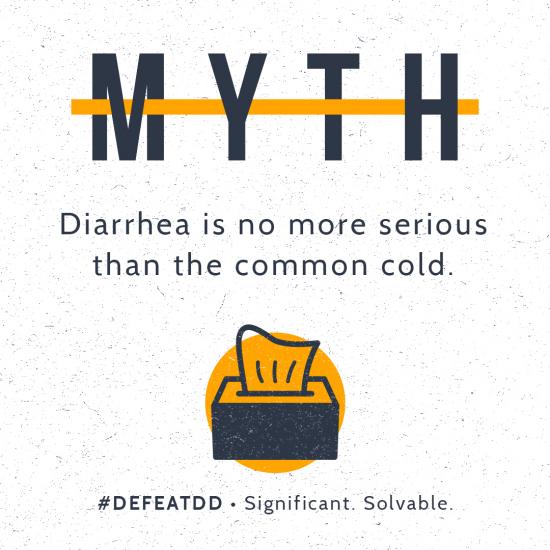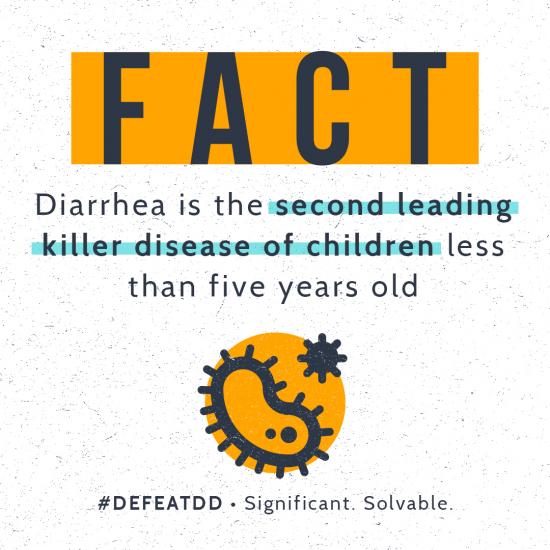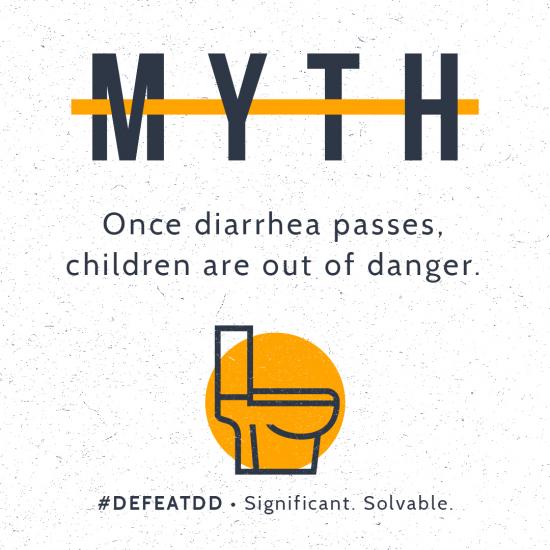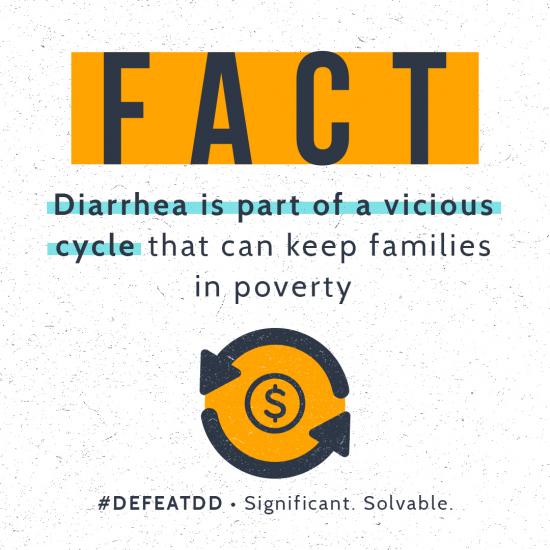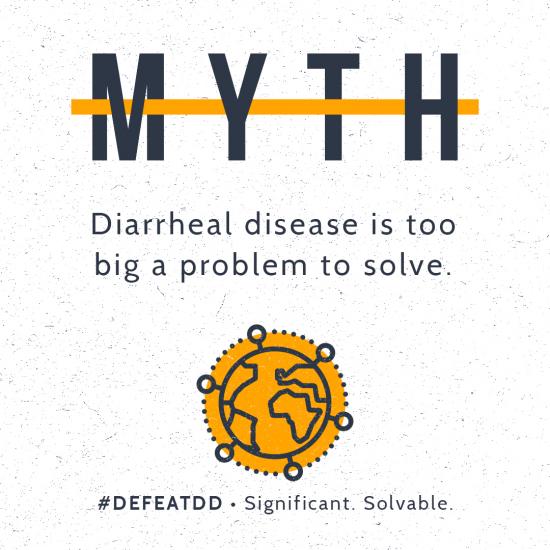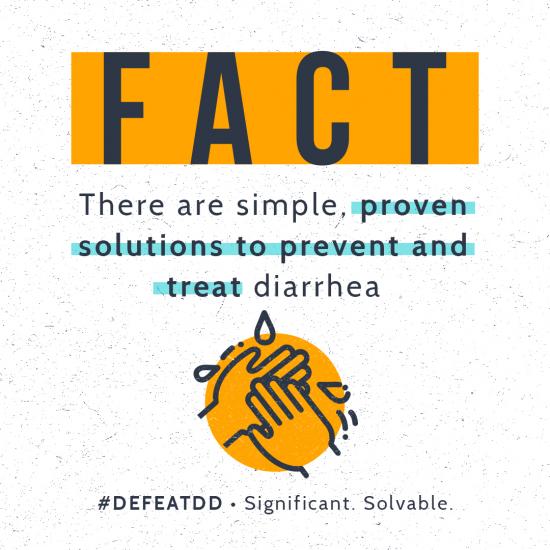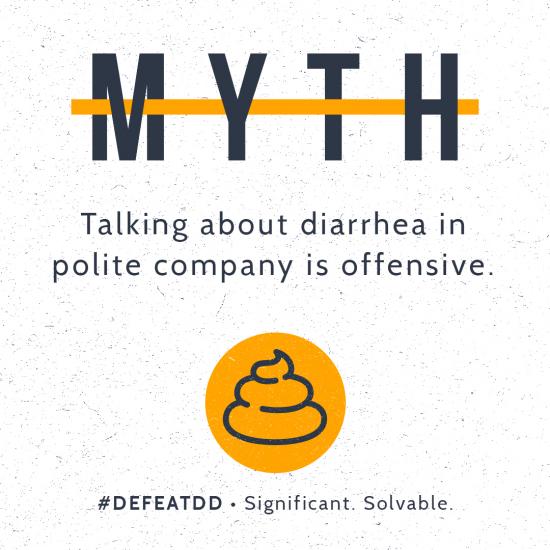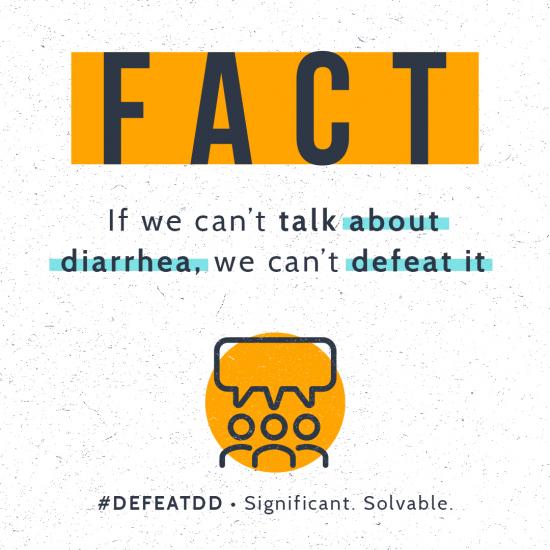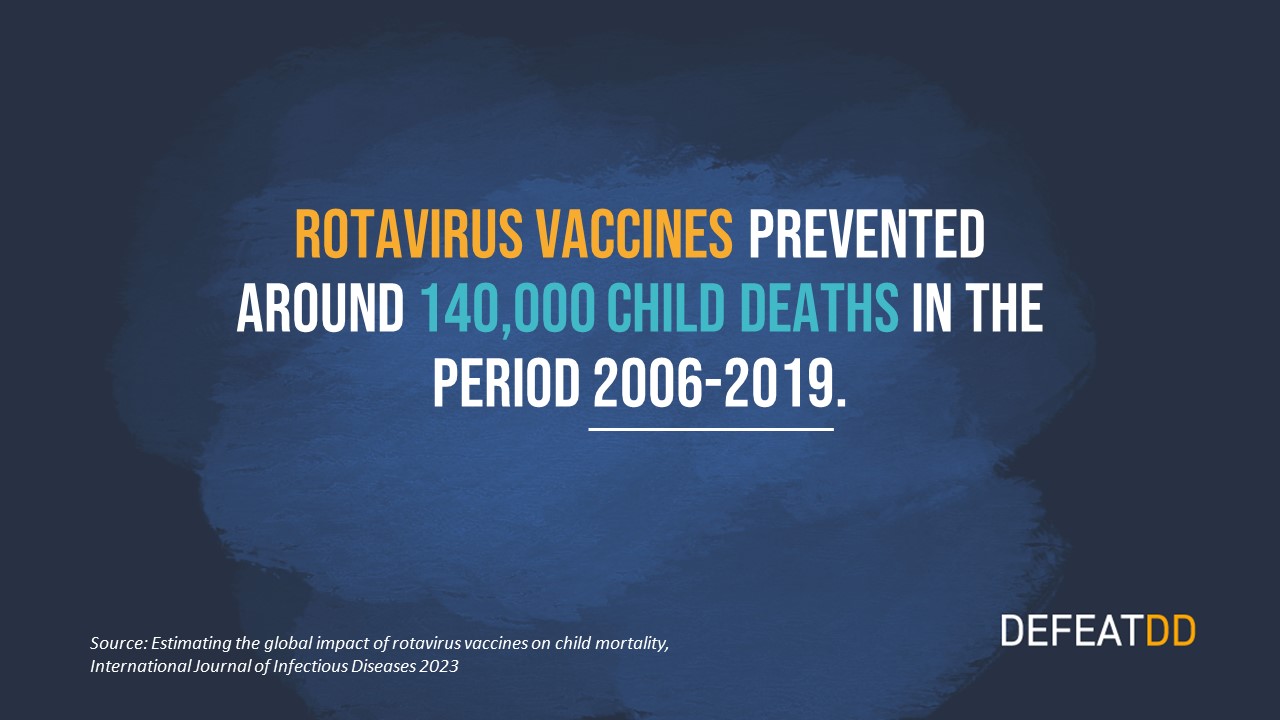Diarrhea: Myths versus facts
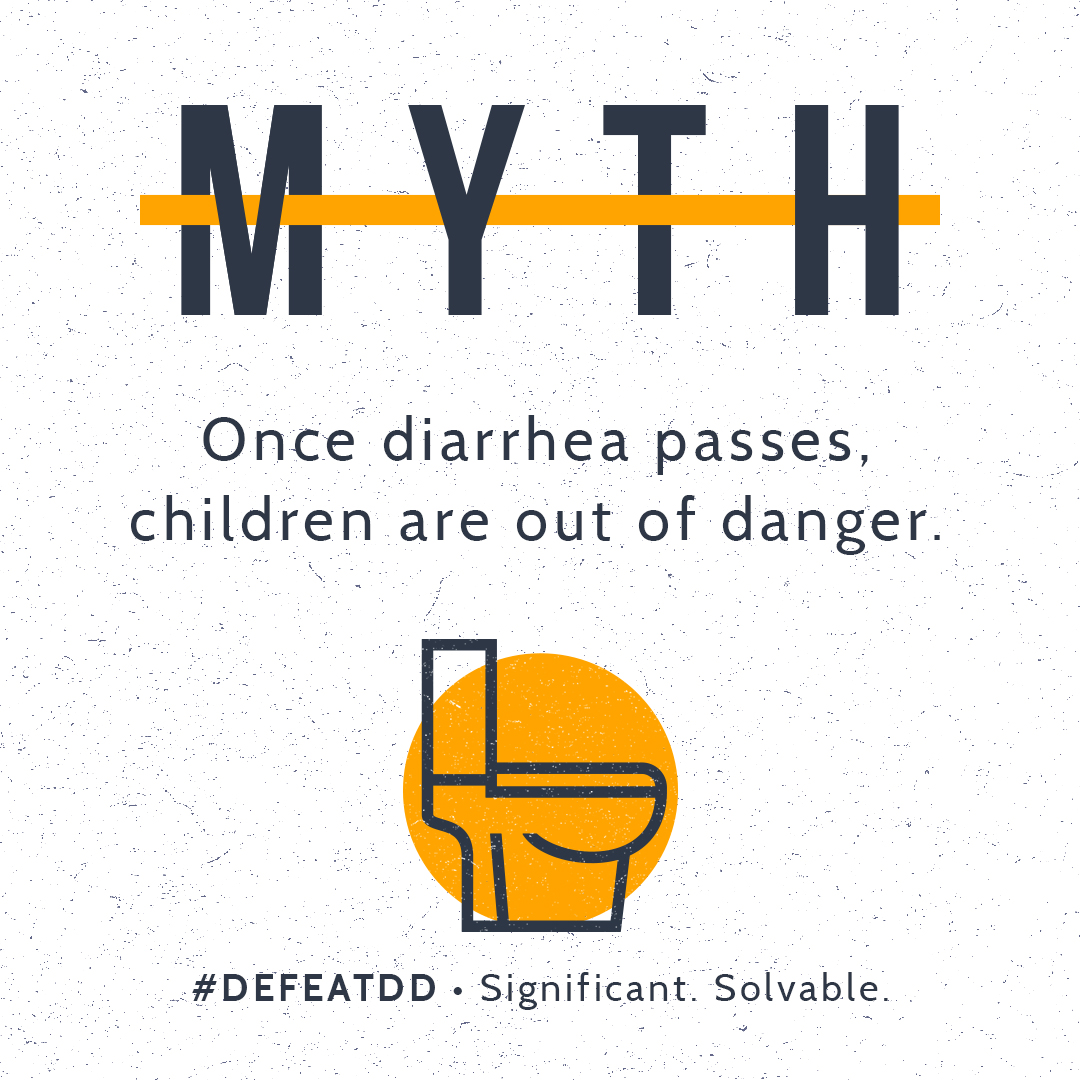
Help us break the poo taboo. Each of these myths comes with a corresponding fact and we suggest posting them together.
Download the graphics here.
For background on the myth versus facts, read our blog: Diarrhea Myths, Debunked.
Diarrhea is commonplace (and gross), so it doesn’t get much attention. And it lacks the fearsome associations of diseases like malaria or HIV/AIDS. (The notion that it is “just” diarrhea is a message that Alfred Ochola, a doctor in Kenya, often heard from mothers as well. Here’s his take on debunking this myth.)
The reality is that diarrhea is the second leading killer disease of children less than five years old around the world (pneumonia takes the lead) – about half a million children per year.
The good news that fewer children are dying from diarrhea also presents a new challenge: repeated exposure to stomach bugs can do damage to fragile, growing bodies.
Malnutrition and diarrhea can become a vicious cycle during the window of life that nutrient absorption is most critical, and it can result in long-term physical and cognitive growth shortfalls. If you want to dig more into the data and science of it, check out our graphics on diarrhea morbidity, environmental enteropathy (gut damage), or disability-adjusted life years (DALYs).
In addition to the long-term consequences for child health, the same holds true for whole families and entire communities.
In addition to the long-term consequences for child health, the same holds true for whole families and entire communities. When a child gets sick, that means a parent must take time away from work and lose precious income. The added costs of transportation and treatment double the burden. As an example, a study in Malawi showed that just one episode of diarrhea could push families into poverty.If that sick child becomes stunted as a result of repeated infections, the child later faces an increased risk for chronic diseases and diminished income-earning capacity. In this way, diarrheal disease is a vicious cycle that keeps people in ill health and families in poverty.
If there was a way to save half a million children’s lives, and improve the quality for millions more, every year, wouldn’t you raise your voice about it? (There is a way!)
It sounds daunting and it is significant, but it’s solvable, and with simple, proven, and cost-effective solutions that are available today: safe drinking water, sanitation, and hygiene education (collectively known as WASH), vaccines, oral rehydration solution (ORS) and zinc, nutrition, and exclusive breastfeeding. And research into innovative tools and ways to increase access can help speed up progress. Our foundational message here at DefeatDD? Invest in an integrated and holistic approach. Children don’t live in siloes, so programs for these tools shouldn’t, either.For example, we published an analysis with WaterAid that found simultaneous improvements in access to WASH services and traditional health tools together seem to halve the probability of being stunted compared with access to WASH alone.
We think you know where we stand on this one…
The real offense is the lack of awareness of this health crisis affecting the lives and livelihoods of children and families around the world.Help us spread the word about the solutions to defeat diarrheal disease.


